49 Books Published by Duke University Press Books on AALBC — Book Cover Collage
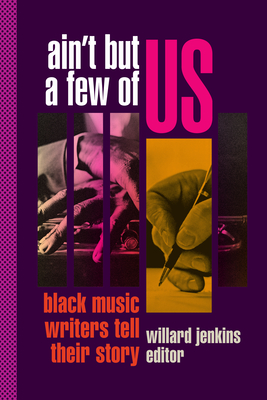 Ain’t But a Few of Us: Black Music Writers Tell Their Story
Ain’t But a Few of Us: Black Music Writers Tell Their Story
by Willard JenkinsDuke University Press Books (Dec 02, 2022)
Read Detailed Book Description
Despite the fact that most of jazz’s major innovators and performers have been African American, the overwhelming majority of jazz journalists, critics, and authors have been and continue to be white men. No major mainstream jazz publication has ever had a black editor or publisher. Ain’t But a Few of Us presents over two dozen candid dialogues with black jazz critics and journalists ranging from Greg Tate, Farah Jasmine Griffin, and Robin D. G. Kelley to Tammy Kernodle, Ron Welburn, and John Murph. They discuss the obstacles to access for black jazz journalists, outline how they contend with the world of jazz writing dominated by white men, and point out that these racial disparities are not confined to jazz but hamper their efforts at writing about other music genres as well.
Ain’t But a Few of Us also includes an anthology section, which reprints classic essays and articles from black writers and musicians such as LeRoi Jones, Archie Shepp, A. B. Spellman, and Herbie Nichols.
Contributors:
Eric Arnold, Bridget Arnwine, Angelika Beener, Playthell Benjamin, Herb Boyd, Bill Brower, Jo Ann Cheatham, Karen Chilton, Janine Coveney, Marc Crawford, Stanley Crouch, Anthony Dean-Harris, Jordannah Elizabeth, Lofton Emenari III, Bill Francis, Barbara Gardner, Farah Jasmine Griffin, Jim Harrison, Eugene Holley Jr., Haybert Houston, Robin James, Willard Jenkins, Martin Johnson, LeRoi Jones, Robin D. G. Kelley, Tammy Kernodle, Steve Monroe, Rahsaan Clark Morris, John Murph, Herbie Nichols, Don Palmer, Bill Quinn, Guthrie P. Ramsey Jr., Ron Scott, Gene Seymour, Archie Shepp, Wayne Shorter, A. B. Spellman, Rex Stewart, Greg Tate, Billy Taylor, Greg Thomas, Robin Washington, Ron Welburn, Hollie West, K. Leander Williams, Ron Wynn
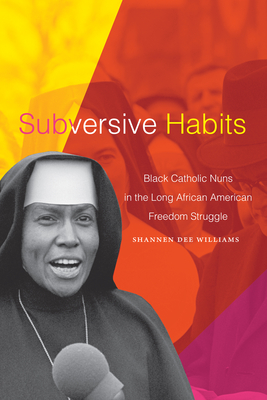 Subversive Habits: Black Catholic Nuns in the Long African American Freedom Struggle
Subversive Habits: Black Catholic Nuns in the Long African American Freedom Struggle
by Shannen Dee WilliamsDuke University Press Books (May 17, 2022)
Read Detailed Book Description
In Subversive Habits, Shannen Dee Williams provides the first full history of Black Catholic nuns in the United States, hailing them as the forgotten prophets of Catholicism and democracy.
Drawing on oral histories and previously sealed Church records, Williams demonstrates how master narratives of women’s religious life and Catholic commitments to racial and gender justice fundamentally change when the lives and experiences of African American nuns are taken seriously. For Black Catholic women and girls, embracing the celibate religious state constituted a radical act of resistance to white supremacy and the sexual terrorism built into chattel slavery and segregation.
Williams shows how Black sisters—such as Sister Mary Antona Ebo, who was the only Black member of the inaugural delegation of Catholic sisters to travel to Selma, Alabama, and join the Black voting rights marches of 1965—were pioneering religious leaders, educators, healthcare professionals, desegregation foot soldiers, Black Power activists, and womanist theologians. In the process, Williams calls attention to Catholic women’s religious life as a stronghold of white supremacy and racial segregation—and thus an important battleground in the long African American freedom struggle.
 Founding Members of the National Black Sisters’s Conference in 1968 at Mount Mercy College (now Carlow University) in Pittsburgh, PA
Founding Members of the National Black Sisters’s Conference in 1968 at Mount Mercy College (now Carlow University) in Pittsburgh, PA
2022 marks the 30th anniversary of Sister Act. For most people, Whoopi Goldberg’s Golden Globe-winning performance as Sister Mary Clarence is the dominant interpretation of an African American nun and the desegregation of white Catholic sisterhood in the United States. Subversive Habits: Black Catholic Nuns in the Long African American Freedom Struggle, which received a starred review from Publishers Weekly, tells the story of America’s real sister act: the story of how generations of African American women and girls called to the sacred vows of poverty, chastity, and obedience fought against racism, sexism, and exclusion to become and minster as consecrated women of God in the Roman Catholic Church. In offering the first full history of Black sisters in the United States, this book turns overdue attention to Catholic women's religious life as a stronghold of white supremacy and racial segregation—and thus an important battleground in the long African American freedom struggle.
I wrote Subversive Habits because the great Nobel laureate and Catholic writer Toni Morrison once said: “If there is a book you want to read, but it hasn’t been written yet, then you must write it.” I am a lifelong Catholic and the daughter of the first Black woman to graduate from the University of Notre Dame. Yet, my mother and I did not learn of the existence of Black nuns in our church until 2007 when I stumbled upon a newspaper article from 1968 announcing the formation of a Black power federation of Catholic nuns called the National Black Sisters’ Conference. When confronted with a silenced past, the greatest responsibility of the historian--and the most radical thing any person can do--is to tell the story that was never meant to be told. For far too long, scholars of the American, Catholic, and Black pasts by virtue of misrepresentation, marginalization, and outright erasure have unconsciously and consciously declared that the history of Black Catholic nuns does not matter. Subversive Habits unequivocally demonstrates that their history does matter--and has always mattered.” —Dr. Shannen Dee Williams
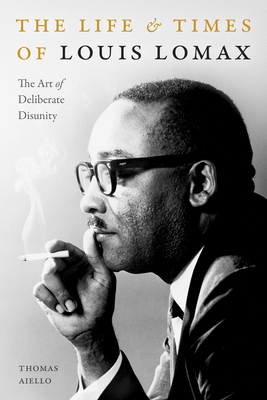 The Life and Times of Louis Lomax: The Art of Deliberate Disunity
The Life and Times of Louis Lomax: The Art of Deliberate Disunity
by Thomas AielloDuke University Press Books (Apr 02, 2021)
Read Detailed Book Description
Syndicated television and radio host. Serial liar. Pioneering journalist. Convicted criminal. Close ally of Malcolm X and Martin Luther King Jr. Publicity-seeking provocateur. Louis Lomax’s life was a study in contradiction. In this biography, Thomas Aiello traces the complicated and fascinating arc of Lomax’s life and career, showing how the contradictions, tumult, and inconsistencies that marked his life reflected those of 1960s America.
Aiello takes readers from Lomax’s childhood in the Deep South to his early confidence schemes to his emergence as one of the loudest and most influential voices of the civil rights movement. Regardless of what political position he happened to take at any given moment, Lomax preached “the art of deliberate disunity,” in which the path to democracy could only be achieved through a diversity of opinions. Engaging and broad in scope, The Life and Times of Louis Lomax is the definitive study of one of the civil rights era’s most complicated, important, and overlooked figures.
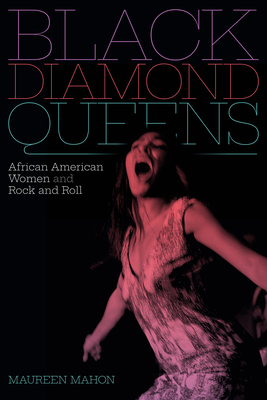 Black Diamond Queens: African American Women and Rock and Roll
Black Diamond Queens: African American Women and Rock and Roll
by Maureen MahonDuke University Press Books (Oct 30, 2020)
Read Detailed Book Description
African American women have played a pivotal part in rock and roll-from laying its foundations and singing chart-topping hits to influencing some of the genre’s most iconic acts. Despite this, black women’s importance to the music’s history has been diminished by narratives of rock as a mostly white male enterprise.
In Black Diamond Queens, Maureen Mahon draws on recordings, press coverage, archival materials, and interviews to document the history of African American women in rock and roll between the 1950s and the 1980s. Mahon details the musical contributions and cultural impact of Big Mama Thornton, LaVern Baker, Betty Davis, Tina Turner, Merry Clayton, Labelle, the Shirelles, and others, demonstrating how dominant views of gender, race, sexuality, and genre affected their careers. By uncovering this hidden history of black women in rock and roll, Mahon reveals a powerful sonic legacy that continues to reverberate into the twenty-first century.
To Make Negro Literature: Writing, Literary Practice, and African American Authorship
by Elizabeth McHenryDuke University Press Books (Sep 24, 2020)
Read Detailed Book Description
“From the title to the final words of her coda, Elizabeth McHenry provokes, persuades, and prods readers to apply thought to the knowledge presented in this book. It is a nuanced and wise offering of immaculate research and righteous rumination to anyone—whether the casual browser who never once thought about the topic or the most sophisticated scholar of Black culture generally and print culture particularly.” — Frances Smith Foster, author of Til Death or Distance Do Us Part: Love and Marriage in African America
 Dub: Finding Ceremony
Dub: Finding Ceremony
by Alexis Pauline GumbsDuke University Press Books (Feb 14, 2020)
Read Detailed Book Description
The concluding volume in a poetic trilogy, Alexis Pauline Gumbs’s Dub: Finding Ceremony takes inspiration from theorist Sylvia Wynter, dub poetry, and ocean life to offer a catalog of possible methods for remembering, healing, listening, and living otherwise. In these prose poems, Gumbs channels the voices of her ancestors, including whales, coral, and oceanic bacteria, to tell stories of diaspora, indigeneity, migration, blackness, genius, mothering, grief, and harm. Tracing the origins of colonialism, genocide, and slavery as they converge in Black feminist practice, Gumbs explores the potential for the poetic and narrative undoing of the knowledge that underpins the concept of Western humanity. Throughout, she reminds us that dominant modes of being human and the oppression those modes create can be challenged, and that it is possible to make ourselves and our planet anew.
 Intersectionality as Critical Social Theory
Intersectionality as Critical Social Theory
by Patricia Hill CollinsDuke University Press Books (Aug 23, 2019)
Read Detailed Book Description
Patricia Hill Collins offers a set of analytical tools for those wishing to develop intersectionality’s capability to theorize social inequality in ways that would facilitate social change.
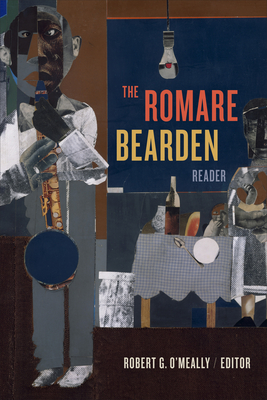 The Romare Bearden Reader
The Romare Bearden Reader
by Robert G. O’MeallyDuke University Press Books (Jun 14, 2019)
Read Detailed Book Description
The Romare Bearden Reader brings together a collection of new essays and canonical writings by novelists, poets, historians, critics, and playwrights. The contributors, who include Toni Morrison, Ralph Ellison, August Wilson, Farah Jasmine Griffin, and Kobena Mercer, contextualize Bearden’s life and career within the history of modern art, examine the influence of jazz and literature on his work, trace his impact on twentieth-century African American culture, and outline his art’s political dimensions. Others focus on specific pieces, such as A Black Odyssey, or the ways in which Bearden used collage to understand African American identity.
The Reader also includes Bearden’s most important writings, which grant readers insight into his aesthetic values and practices and share his desire to tell what it means to be black in America. Put simply, The Romare Bearden Reader is an indispensable volume on one of the giants of twentieth-century American art.
Contributors: Elizabeth Alexander, Romare Bearden, Mary Lee Corlett, Rachel DeLue, David C. Driskell, Brent Hayes Edwards, Ralph Ellison, Henri Ghent, Farah Jasmine Griffin, Harry Henderson, Kobena Mercer, Toni Morrison, Albert Murray, Robert G. O’Meally, Richard Powell, Richard Price, Sally Price, Myron Schwartzman, Robert Burns Stepto, Calvin Tomkins, John Edgar Wideman, August Wilson
 Captivating Technology: Race, Carceral Technoscience, and Liberatory Imagination in Everyday Life
Captivating Technology: Race, Carceral Technoscience, and Liberatory Imagination in Everyday Life
by Ruha BenjaminDuke University Press Books (Jun 07, 2019)
Read Detailed Book Description
The contributors to Captivating Technology examine how carceral technologies such as electronic ankle monitors and predictive-policing algorithms are being deployed to classify and coerce specific populations and whether these innovations can be appropriated and reimagined for more liberatory ends.
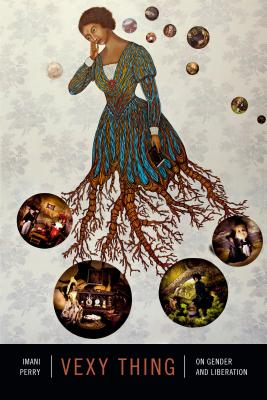 Vexy Thing: On Gender and Liberation
Vexy Thing: On Gender and Liberation
by Imani PerryDuke University Press Books (Sep 28, 2018)
Read Detailed Book Description
Imani Perry recenters patriarchy to contemporary discussions of feminism through a social and literary analysis of cultural artifacts—ranging from nineteenth-century slavery court cases and historical vignettes to literature and contemporary art—from the Enlightenment to the present.
 The Blue Clerk: Ars Poetica in 59 Versos
The Blue Clerk: Ars Poetica in 59 Versos
by Dionne BrandDuke University Press Books (Aug 29, 2018)
Read Detailed Book Description
On a lonely wharf a clerk in an ink-blue coat inspects bales and bales of paper that hold a poet’s accumulated left-hand pages—the unwritten, the withheld, the unexpressed, the withdrawn, the restrained, the word-shard. In The Blue Clerk renowned poet Dionne Brand stages a conversation and an argument between the poet and the Blue Clerk, who is the keeper of the poet’s pages. In their dialogues—which take shape as a series of haunting prose poems—the poet and the clerk invoke a host of writers, philosophers, and artists, from Jacob Lawrence, Lola Kiepja, and Walter Benjamin to John Coltrane, Josephine Turalba, and Jorge Luis Borges. Through these essay poems, Brand explores memory, language, culture, and time while intimately interrogating the act and difficulty of writing, the relationship between the poet and the world, and the link between author and art. Inviting the reader to engage with the resonant meanings of the withheld, Brand offers a profound and moving philosophy of writing and a wide-ranging analysis of the present world.
 Little Man, Little Man: A Story of Childhood
Little Man, Little Man: A Story of Childhood
by James BaldwinDuke University Press Books (Aug 01, 2018)
Read Detailed Book Description
“a child’s story for adults”
Illustrated by Yoran Cazac. Edited and with an introduction by Nicholas Boggs and Jennifer DeVere Brody With a foreword by Tejan Karefa and an afterword by Aisha Karefa-Smart
Little Man, Little Man is the only children’s book by acclaimed writer James Baldwin. Published in 1976 by Dial Press, the book quickly went out of print. Now, at a time when Baldwin is more popular than ever, and readers, librarians, and booksellers are clamoring for more diverse children’s books, Duke University Press is proud to bring the book back into print. It will be available in August 2018.
In the book, four-year-old TJ spends his days on his lively Harlem block playing with his best friends WT and Blinky and running errands for neighbors. As he comes of age as a “Little Man” with big dreams, TJ faces a world of grown-up adventures and realities. Little Man, Little Man celebrates and explores the challenges and joys of black childhood. In it we not only see life in 1970s Harlem from a black child’s perspective; we gain a fuller appreciation of the genius of one of America’s greatest writers.
James Baldwin called Little Man, Little Man
[a] celebration of the self-esteem of black children.”
In their brief introduction to the book, Baldwin scholars Nicholas Boggs and Jennifer DeVere Brody explain that the illustrations and text invite readers to “look again and experience the social ills represented in the book—violence, economic disparity, alcoholism and drug abuse, and the distortions of mass media—from the perspective of a black child, and one, it is important to note in closing, who is not innocent.” They suggest that audiences at the time were not ready for this perspective, which might explain the book’s initial reception.
Duke University Press’s new edition of Little Man, Little Man retains the charming original illustrations by French artist Yoran Cazac and includes a foreword by Baldwin’s nephew Tejan “TJ” Karefa-Smart (the inspiration for the title character) and an afterword by his niece Aisha Karefa-Smart.
 The Universal Machine (consent not to be a single being)
The Universal Machine (consent not to be a single being)
by Fred MotenDuke University Press Books (Apr 27, 2018)
Read Detailed Book Description
"Taken as a trilogy, consent not to be a single being is a monumental accomplishment: a brilliant theoretical intervention that might be best described as a powerful case for blackness as a category of analysis."—Brent Hayes Edwards, author of Epistrophies: Jazz and the Literary Imagination
In The Universal Machine—the concluding volume to his landmark trilogy consent not to be a single being—Fred Moten presents a suite of three essays on Emmanuel Levinas, Hannah Arendt, and Frantz Fanon in which he explores questions of freedom, capture, and selfhood. In trademark style, Moten considers these thinkers alongside artists and musicians such as William Kentridge and Curtis Mayfield while interrogating the relation between blackness and phenomenology. Whether using Levinas’s idea of escape in unintended ways, examining Arendt’s antiblackness through Mayfield’s virtuosic falsetto and Anthony Braxton’s musical language, or showing how Fanon’s form of phenomenology enables black social life, Moten formulates blackness as a way of being in the world that evades regulation. Throughout The Universal Machine—and the trilogy as a whole—Moten’s theorizations of blackness will have a lasting and profound impact.
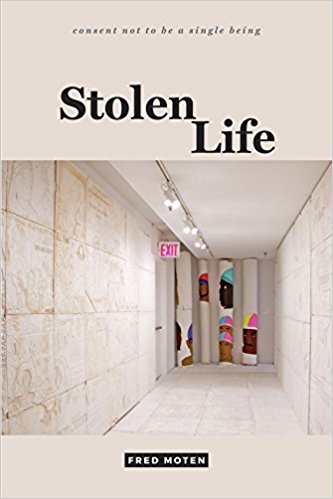 Stolen Life (consent not to be a single being)
Stolen Life (consent not to be a single being)
by Fred MotenDuke University Press Books (Mar 02, 2018)
Read Detailed Book Description
In Stolen Life—the second volume in his landmark trilogy consent not to be a single being—Fred Moten undertakes an expansive exploration of blackness as it relates to black life and the collective refusal of social death. The essays resist categorization, moving from Moten’s opening meditation on Kant, Olaudah Equiano, and the conditions of black thought through discussions of academic freedom, writing and pedagogy, non-neurotypicality, and uncritical notions of freedom. Moten also models black study as a form of social life through an engagement with Fanon, Hartman, and Spillers and plumbs the distinction between blackness and black people in readings of Du Bois and Nahum Chandler. The force and creativity of Moten’s criticism resonate throughout, reminding us not only of his importance as a thinker, but of the continued necessity of interrogating blackness as a form of sociality.
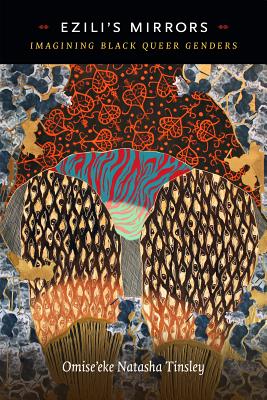 Ezili’s Mirrors: Imagining Black Queer Genders
Ezili’s Mirrors: Imagining Black Queer Genders
by Omise’eke Natasha TinsleyDuke University Press Books (Feb 27, 2018)
Read Detailed Book Description
From the dagger mistress Ezili Je Wouj and the gender-bending mermaid Lasiren to the beautiful femme queen Ezili Freda, the Ezili pantheon of Vodoun spirits represents the divine forces of love, sexuality, prosperity, pleasure, maternity, creativity, and fertility. And just as Ezili appears in different guises and characters, so too does Omise’eke Natasha Tinsley in her voice- and genre-shifting, exploratory book Ezili’s Mirrors. Drawing on her background as a literary critic as well as her quest to learn the lessons of her spiritual ancestors, Tinsley theorizes black Atlantic sexuality by tracing how contemporary queer Caribbean and African American writers and performers evoke Ezili. Tinsley shows how Ezili is manifest in the work and personal lives of singers Whitney Houston and Azealia Banks, novelists Nalo Hopkinson and Ana Lara, performers MilDred Gerestant and Sharon Bridgforth, and filmmakers Anne Lescot and Laurence Magloire—none of whom identify as Vodou practitioners. In so doing, Tinsley offers a model of queer black feminist theory that creates new possibilities for decolonizing queer studies.
 Black and Blur (consent not to be a single being)
Black and Blur (consent not to be a single being)
by Fred MotenDuke University Press Books (Dec 08, 2017)
Read Detailed Book Description
In Black and Blur—the first volume in his sublime and compelling trilogy consent not to be a single being—Fred Moten engages in a capacious consideration of the place and force of blackness in African diaspora arts, politics, and life. In these interrelated essays, Moten attends to entanglement, the blurring of borders, and other practices that trouble notions of self-determination and sovereignty within political and aesthetic realms. Black and Blur is marked by unlikely juxtapositions: Althusser informs analyses of rappers Pras and Ol’ Dirty Bastard; Shakespeare encounters Stokely Carmichael; thinkers like Kant, Adorno, and José Esteban Muñoz and artists and musicians including Thornton Dial and Cecil Taylor play off each other. Moten holds that blackness encompasses a range of social, aesthetic, and theoretical insurgencies that respond to a shared modernity founded upon the sociological catastrophe of the transatlantic slave trade and settler colonialism. In so doing, he unsettles normative ways of reading, hearing, and seeing, thereby reordering the senses to create new means of knowing.
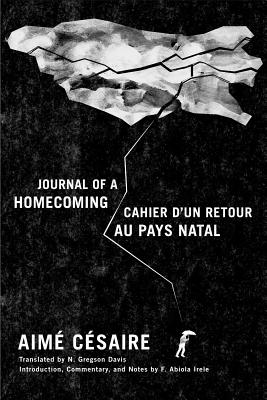 Journal of a Homecoming / Cahier d’un retour au pays natal (English and French Edition)
Journal of a Homecoming / Cahier d’un retour au pays natal (English and French Edition)
by Aimé CésaireDuke University Press Books (Nov 10, 2017)
Read Detailed Book Description
Originally published in 1939, Aimé Césaire’s Cahier d’un retour au pays natal is a landmark of modern French poetry and a founding text of the Négritude movement. This bilingual edition features a new authoritative translation, revised introduction, and extensive commentary, making it a magisterial edition of Césaire’s surrealist masterpiece.
 Louise Thompson Patterson: A Life of Struggle for Justice
Louise Thompson Patterson: A Life of Struggle for Justice
by Keith GilyardDuke University Press Books (Oct 05, 2017)
Read Detailed Book Description
Born in 1901, Louise Thompson Patterson was a leading and transformative figure in radical African American politics. Throughout most of the twentieth century she embodied a dedicated resistance to racial, economic, and gender exploitation. In this, the first biography of Patterson, Keith Gilyard tells her compelling story, from her childhood on the West Coast, where she suffered isolation and persecution, to her participation in the Harlem Renaissance and beyond. In the 1930s and 1940s she became central, along with Paul Robeson, to the labor movement, and later, in the 1950s, she steered proto-black-feminist activities. Patterson was also crucial to the efforts in the 1970s to free political prisoners, most notably Angela Davis. In the 1980s and 1990s she continued to work as a progressive activist and public intellectual. To read her story is to witness the courage, sacrifice, vision, and discipline of someone who spent decades working to achieve justice and liberation for all.
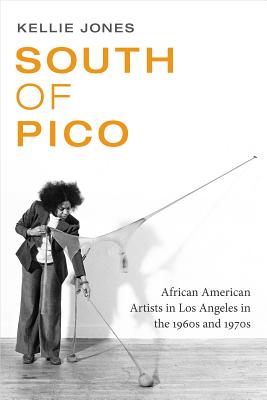 South of Pico: African American Artists in Los Angeles in the 1960s and 1970s
South of Pico: African American Artists in Los Angeles in the 1960s and 1970s
by Kellie JonesDuke University Press Books (Apr 07, 2017)
Read Detailed Book Description
Named a Best Art Book of 2017 by the New York Times and Artforum
In South of Pico Kellie Jones explores how the artists in Los Angeles’s black communities during the 1960s and 1970s created a vibrant, productive, and engaged activist arts scene in the face of structural racism. Emphasizing the importance of African American migration, as well as L.A.’s housing and employment politics, Jones shows how the work of black Angeleno artists such as Betye Saar, Charles White, Noah Purifoy, and Senga Nengudi spoke to the dislocation of migration, L.A.’s urban renewal, and restrictions on black mobility. Jones characterizes their works as modern migration narratives that look to the past to consider real and imagined futures. She also attends to these artists’ relationships with gallery and museum culture and the establishment of black-owned arts spaces. With South of Pico, Jones expands the understanding of the histories of black arts and creativity in Los Angeles and beyond.
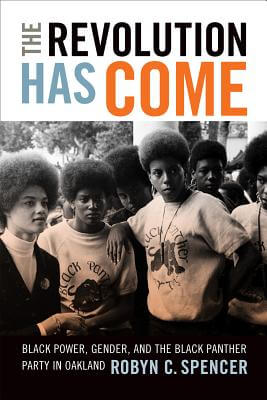 The Revolution Has Come: Black Power, Gender, and the Black Panther Party in Oakland
The Revolution Has Come: Black Power, Gender, and the Black Panther Party in Oakland
by Robyn C. SpencerDuke University Press Books (Dec 02, 2016)
Read Detailed Book Description
In The Revolution Has Come Robyn C. Spencer traces the Black Panther Party’s organizational evolution in Oakland, California, where hundreds of young people came to political awareness and journeyed to adulthood as members. Challenging the belief that the Panthers were a projection of the leadership, Spencer draws on interviews with rank-and-file members, FBI files, and archival materials to examine the impact the organization’s internal politics and COINTELPRO’s political repression had on its evolution and dissolution. She shows how the Panthers’ members interpreted, implemented, and influenced party ideology and programs; initiated dialogues about gender politics; highlighted ambiguities in the Panthers’ armed stance; and criticized organizational priorities. Spencer also centers gender politics and the experiences of women and their contributions to the Panthers and the Black Power movement as a whole.
Providing a panoramic view of the party’s organization over its sixteen-year history, The Revolution Has Come shows how the Black Panthers embodied Black Power through the party’s international activism, interracial alliances, commitment to address state violence, and desire to foster self-determination in Oakland’s black communities.
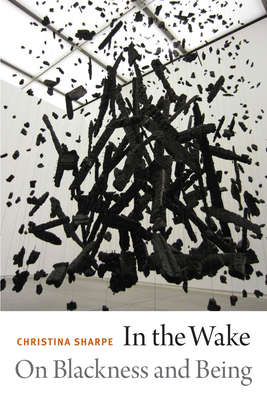 In the Wake: On Blackness and Being
In the Wake: On Blackness and Being
by Christina SharpeDuke University Press Books (Nov 14, 2016)
Read Detailed Book Description
In this original and trenchant work, Christina Sharpe interrogates literary, visual, cinematic, and quotidian representations of Black life that comprise what she calls the "orthography of the wake."
Activating multiple registers of "wake"-the path behind a ship, keeping watch with the dead, coming to consciousness-Sharpe illustrates how Black lives are swept up and animated by the afterlives of slavery, and she delineates what survives despite such insistent violence and negation. Initiating and describing a theory and method of reading the metaphors and materiality of "the wake," "the ship," "the hold," and "the weather," Sharpe shows how the sign of the slave ship marks and haunts contemporary Black life in the diaspora and how the specter of the hold produces conditions of containment, regulation, and punishment, but also something in excess of them.
In the weather, Sharpe situates anti-Blackness and white supremacy as the total climate that produces premature Black death as normative. Formulating the wake and "wake work" as sites of artistic production, resistance, consciousness, and possibility for living in diaspora, In the Wake offers a way forward.
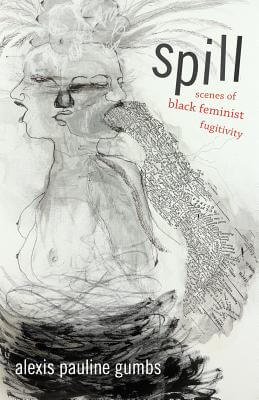 Spill: Scenes of Black Feminist Fugitivity
Spill: Scenes of Black Feminist Fugitivity
by Alexis Pauline GumbsDuke University Press Books (Oct 28, 2016)
Read Detailed Book Description
In Spill, self-described queer Black troublemaker and Black feminist love evangelist Alexis Pauline Gumbs presents a commanding collection of scenes depicting fugitive Black women and girls seeking freedom from gendered violence and racism. In this poetic work inspired by Hortense Spillers, Gumbs offers an alternative approach to Black feminist literary criticism, historiography, and the interactive practice of relating to the words of Black feminist thinkers. Gumbs not only speaks to the spiritual, bodily, and otherworldly experience of Black women but also allows readers to imagine new possibilities for poetry as a portal for understanding and deepening feminist theory.
 Love, H: The Letters of Helene Dorn and Hettie Jones
Love, H: The Letters of Helene Dorn and Hettie Jones
by Hettie JonesDuke University Press Books (Oct 18, 2016)
Read Detailed Book Description
 Flyboy 2: The Greg Tate Reader
Flyboy 2: The Greg Tate Reader
by Greg TateDuke University Press Books (Aug 05, 2016)
Read Detailed Book Description
Since launching his career at the Village Voice in the early 1980s Greg Tate has been one of the premiere critical voices on contemporary Black music, art, literature, film, and politics. Flyboy 2 provides a panoramic view of the last thirty years of Tate’s influential work. Whether interviewing Miles Davis or Ice Cube, reviewing an Azealia Banks mixtape or Suzan Lori Parks’ Topdog/Underdog, discussing visual artist Kara Walker or writer Clarence Major, or analyzing the ties between Afro-futurism, Black feminism, and social movements, Tate’s resounding critical insights illustrate how race, gender, and class become manifest in American popular culture. Above all, Tate demonstrates through his signature mix of vernacular poetics and cultural theory and criticism why visionary Black artists, intellectuals, aesthetics, philosophies, and politics matter to twenty-first-century America.
 South Side Girls: Growing Up in the Great Migration
South Side Girls: Growing Up in the Great Migration
by Marcia ChatelainDuke University Press Books (Apr 03, 2015)
Read Detailed Book Description
In South Side Girls Marcia Chatelain recasts Chicago’s Great Migration through the lens of black girls. Focusing on the years between 1910 and 1940, when Chicago’s black population quintupled, Chatelain describes how Chicago’s black social scientists, urban reformers, journalists and activists formulated a vulnerable image of urban black girlhood that needed protecting. She argues that the construction and meaning of black girlhood shifted in response to major economic, social, and cultural changes and crises, and that it reflected parents’ and community leaders’ anxieties about urbanization and its meaning for racial progress. Girls shouldered much of the burden of black aspiration, as adults often scrutinized their choices and behavior, and their well-being symbolized the community’s moral health. Yet these adults were not alone in thinking about the Great Migration, as girls expressed their views as well. Referencing girls’ letters and interviews, Chatelain uses their powerful stories of hope, anticipation and disappointment to highlight their feelings and thoughts, and in so doing, she helps restore the experiences of an understudied population to the Great Migration’s complex narrative.
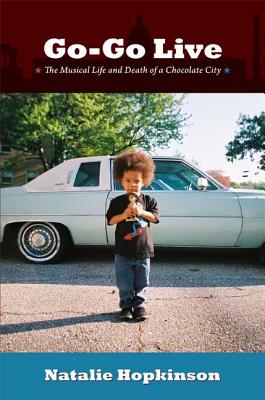 Go-Go Live: The Musical Life and Death of a Chocolate City
Go-Go Live: The Musical Life and Death of a Chocolate City
by Natalie HopkinsonDuke University Press Books (May 22, 2012)
Read Detailed Book Description
Go-go is the conga drum–inflected black popular music that emerged in Washington, D.C., during the 1970s. The guitarist Chuck Brown, the "Godfather of Go-Go," created the music by mixing sounds borrowed from church and the blues with the funk and flavor that he picked up playing for a local Latino band. Born in the inner city, amid the charred ruins of the 1968 race riots, go-go generated a distinct culture and an economy of independent, almost exclusively black-owned businesses that sold tickets to shows and recordings of live go-gos. At the peak of its popularity, in the 1980s, go-go could be heard around the capital every night of the week, on college campuses and in crumbling historic theaters, hole-in-the-wall nightclubs, backyards, and city parks.Go-Go Live is a social history of black Washington told through its go-go music and culture. Encompassing dance moves, nightclubs, and fashion, as well as the voices of artists, fans, business owners, and politicians, Natalie Hopkinson’s Washington-based narrative reflects the broader history of race in urban America in the second half of the twentieth century and the early twenty-first. In the 1990s, the middle class that had left the city for the suburbs in the postwar years began to return. Gentrification drove up property values and pushed go-go into D.C.’s suburbs. The Chocolate City is in decline, but its heart, D.C.’s distinctive go-go musical culture, continues to beat. On any given night, there’s live go-go in the D.C. metro area.
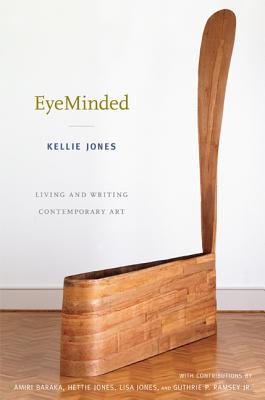 EyeMinded: Living and Writing Contemporary Art
EyeMinded: Living and Writing Contemporary Art
by Kellie JonesDuke University Press Books (May 27, 2011)
Read Detailed Book Description
A daughter of the poets Hettie Jones and Amiri Baraka, Kellie Jones grew up immersed in a world of artists, musicians, and writers in Manhattan’s East Village and absorbed in black nationalist ideas about art, politics, and social justice across the river in Newark. The activist vision of art and culture that she learned in those two communities, and especially from her family, has shaped her life and work as an art critic and curator. Featuring selections of her writings from the past twenty years, EyeMinded reveals Jones’s role in bringing attention to the work of African American, African, Latin American, and women artists who have challenged established art practices. Interviews that she conducted with the painter Howardena Pindell, the installation and performance artist David Hammons, and the Cuban sculptor Kcho appear along with pieces on the photographers Dawoud Bey, Lorna Simpson, and Pat Ward Williams; the sculptor Martin Puryear; the assemblage artist Betye Saar; and the painters Jean-Michel Basquiat, Norman Lewis, and Al Loving. Reflecting Jones’s curatorial sensibility, this collection is structured as a dialogue between her writings and works by her parents, her sister Lisa Jones, and her husband Guthrie P. Ramsey Jr. EyeMinded offers a glimpse into the family conversation that has shaped and sustained Jones, insight into the development of her critical and curatorial vision, and a survey of some of the most important figures in contemporary art.
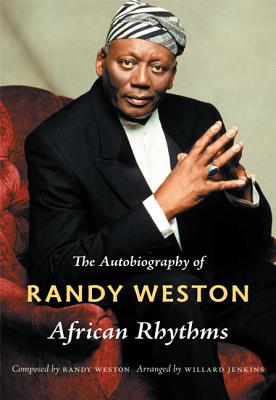 African Rhythms: The Autobiography Of Randy Weston
African Rhythms: The Autobiography Of Randy Weston
by Randy Weston and Willard JenkinsDuke University Press Books (Oct 05, 2010)
Read Detailed Book Description
The pianist, composer, and bandleader Randy Weston is one of the world’s most influential jazz musicians and a remarkable storyteller whose career has spanned five continents and more than six decades. Packed with fascinating anecdotes, African Rhythms is Weston’s life story, as told by him to the music journalist Willard Jenkins. It encompasses Weston’s childhood in Brooklyn’s Bedford-Stuyvesant neighborhood—where his parents and other members of their generation imbued him with pride in his African heritage—and his introduction to jazz and early years as a musician in the artistic ferment of mid-twentieth-century New York. His music has taken him around the world: he has performed in eighteen African countries, in Buddhist temples and Shinto shrines, in the Canterbury Cathedral, and at the grand opening of the Bibliotheca Alexandrina: The New Library of Alexandria. Africa is at the core of Weston’s music and spirituality. He has traversed the continent on a continuous quest to learn about its musical traditions, produced its first major jazz festival, and lived for years in Morocco, where he opened a popular jazz club, the African Rhythms Club, in Tangier.Weston’s narrative is replete with tales of the people he has met and befriended, and with whom he has worked. He describes his unique partnerships with Langston Hughes, the musician and arranger Melba Liston, and the jazz scholar Marshall Stearns, as well as his friendships and collaborations with Duke Ellington, Dizzy Gillespie, Coleman Hawkins, Thelonious Monk, Billy Strayhorn, Max Roach, Charlie Parker, Miles Davis, the novelist Paul Bowles, the Cuban percussionist Candido Camero, the Ghanaian jazz artist Kofi Ghanaba, the Gnawa musicians of Morocco, and many others. With African Rhythms, an international jazz virtuoso continues to create cultural history.
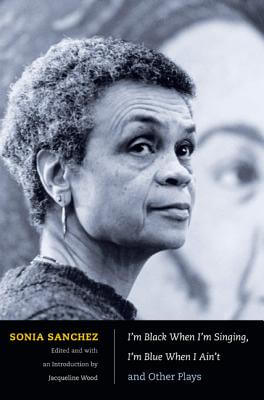 I’m Black When I’m Singing, I’m Blue When I Ain’t And Other Plays
I’m Black When I’m Singing, I’m Blue When I Ain’t And Other Plays
by Sonia SanchezDuke University Press Books (Sep 17, 2010)
Read Detailed Book Description
"Sonia Sanchez remains one of the most read, respected, and visible figures of the Black Arts Movement, as well as its most significant female figure. This volume only adds to that legacy." —Amiri Baraka
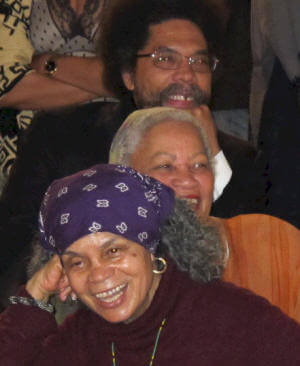 This collection brings together for the first time the plays of Sonia
Sanchez, a prolific, award-winning poet and one of the most prominent
writers in the Black Arts
Movement. In addition to Sanchez’s five previously published plays
The Bronx Is Next (1970), Dirty Hearts (1971), Sister
Son/ji (1972), Malcolm/Man Don’t Live Here No Mo (1979)
Uh, Uh; But How Do It Free Us? (1975), and , the collection also
includes her two unpublished plays, I’m Black When I’m Singing, I’m Blue
When I Ain’t (1982) and 2 x 2 (2009).
This collection brings together for the first time the plays of Sonia
Sanchez, a prolific, award-winning poet and one of the most prominent
writers in the Black Arts
Movement. In addition to Sanchez’s five previously published plays
The Bronx Is Next (1970), Dirty Hearts (1971), Sister
Son/ji (1972), Malcolm/Man Don’t Live Here No Mo (1979)
Uh, Uh; But How Do It Free Us? (1975), and , the collection also
includes her two unpublished plays, I’m Black When I’m Singing, I’m Blue
When I Ain’t (1982) and 2 x 2 (2009).
It reveals the thematic and formal exchanges between Sanchez’s poetry and dramatic works over the course of four decades. Sanchez emerged as a black nationalist poet and playwright in the late 1960s and early 1970s. Like her poetry, her dramas reflect her critique of the racism and sexism that she encountered as a young female writer in the black militant community, her ongoing concern with the well-being of the black community, and her commitment to social justice. I’m Black When I’m Singing, I’m Blue When I Ain’t and Other Plays includes three essays in which Sanchez reflects on her art and activism, and an introduction by Jacqueline Wood situating Sanchez’s plays in relation to her poetry, activism, and the feminist dramatic voice in black revolutionary art.
 Monstrous Intimacies: Making Post-Slavery Subjects
Monstrous Intimacies: Making Post-Slavery Subjects
by Christina SharpeDuke University Press Books (Sep 07, 2010)
Read Detailed Book Description
Arguing that the fundamental, familiar, sexual violence of slavery and racialized subjugation have continued to shape black and white subjectivities into the present, Christina Sharpe interprets African diasporic and Black Atlantic visual and literary texts that address those "monstrous intimacies" and their repetition as constitutive of post-slavery subjectivity.
Her illuminating readings juxtapose Frederick Douglass’s narrative of witnessing the brutal beating of his Aunt Hester with Essie Mae Washington-Williams’s declaration of freedom in Dear Senator: A Memoir by the Daughter of Strom Thurmond, as well as the "generational genital fantasies" depicted in Gayl Jones’s novel Corregidora with a firsthand account of such "monstrous intimacies" in the journals of an antebellum South Carolina senator, slaveholder, and vocal critic of miscegenation.
Sharpe explores the South African-born writer Bessie Head’s novel Maru-about race, power, and liberation in Botswana-in light of the history of the KhoiSan woman Saartje Baartman, who was displayed in Europe as the "Hottentot Venus" in the nineteenth century. Reading Isaac Julien’s film The Attendant, Sharpe takes up issues of representation, slavery, and the sadomasochism of everyday black life. Her powerful meditation on intimacy, subjection, and subjectivity culminates in an analysis of Kara Walker’s black silhouettes, and the critiques leveled against both the silhouettes and the artist.
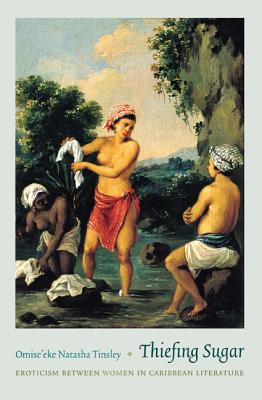 Thiefing Sugar: Eroticism between Women in Caribbean Literature (Perverse Modernities: A Series Edited by Jack Halberstam and Lisa Lowe)
Thiefing Sugar: Eroticism between Women in Caribbean Literature (Perverse Modernities: A Series Edited by Jack Halberstam and Lisa Lowe)
by Omise’eke Natasha TinsleyDuke University Press Books (Aug 18, 2010)
Read Detailed Book Description
In Thiefing Sugar, Omise’eke Natasha Tinsley explores the poetry and prose of Caribbean women writers, revealing in their imagery a rich tradition of erotic relations between women. She takes the book’s title from Dionne Brand’s novel In Another Place, Not Here, where eroticism between women is likened to the sweet and subversive act of cane cutters stealing sugar. The natural world is repeatedly reclaimed and reinterpreted to express love between women in the poetry and prose that Tinsley analyzes. She not only recuperates stories of Caribbean women loving women, stories that have been ignored or passed over by postcolonial and queer scholarship until now, she also shows how those erotic relations and their literary evocations form a poetics and politics of decolonization. Tinsley’s interpretations of twentieth-century literature by Dutch-, English-, and French-speaking women from the Caribbean take into account colonialism, migration, labor history, violence, and revolutionary politics. Throughout Thiefing Sugar, Tinsley connects her readings to contemporary matters such as neoimperialism and international LGBT and human-rights discourses. She explains too how the texts that she examines intervene in black feminist, queer, and postcolonial studies, particularly when she highlights the cultural limitations of the metaphors that dominate queer theory in North America and Europe, including those of the closet and “coming out.”
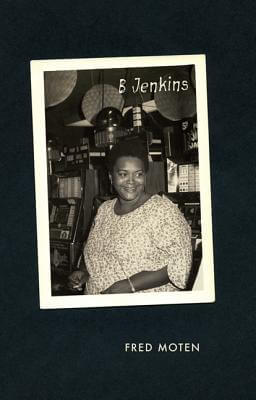 B Jenkins (Refiguring American Music)
B Jenkins (Refiguring American Music)
by Fred MotenDuke University Press Books (Jan 05, 2010)
Read Detailed Book Description
The fourth collection of poetry from the literary and cultural critic Fred Moten, B Jenkins is named after the poet’s mother, who passed away in 2000. It is both an elegy and an inquiry into many of the themes that Moten has explored throughout his career: language, music, performance, improvisation, and the black radical aesthetic and political tradition. In Moten’s verse, the arts, scholarship, and activism intertwine. Cadences echo from his mother’s Arkansas home through African American history and avant-garde jazz riffs. Formal innovations suggest the ways that words, sounds, and music give way to one another.The first and last poems in the collection are explicitly devoted to Moten’s mother; the others relate more obliquely to her life and legacy. They invoke performers, writers, artists, and thinkers including not only James Baldwin, Roland Barthes, Frederick Douglass, Billie Holiday, Audre Lorde, Charlie Parker, and Cecil Taylor, but also contemporary scholars of race, affect, and queer theory. The book concludes with an interview conducted by Charles Henry Rowell, the editor of the journal Callaloo. Rowell elicits Moten’s thoughts on the relation of his poetry to theory, music, and African American vernacular culture.
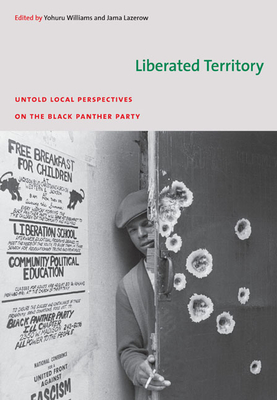 Liberated Territory: Untold Local Perspectives on the Black Panther Party
Liberated Territory: Untold Local Perspectives on the Black Panther Party
by Yohuru WilliamsDuke University Press Books (Jan 01, 2009)
Read Detailed Book Description
With their collection In Search of the Black Panther Party, Yohuru Williams and Jama Lazerow provided a broad analysis of the Black Panther Party and its legacy. In Liberated Territory, they turn their attention to local manifestations of the organization, far away from the party’s Oakland headquarters. This collection’s contributors, all historians, examine how specific party chapters and offshoots emerged, developed, and waned, as well as how the local branches related to their communities and to the national party.
The histories and character of the party branches vary as widely as their locations. The Cape Verdeans of New Bedford, Massachusetts, were initially viewed as a particular challenge for the local Panthers but later became the mainstay of the Boston-area party. In the early 1970s, the Winston-Salem, North Carolina, chapter excelled at implementing the national Black Panther Party’s strategic shift from revolutionary confrontation to mainstream electoral politics. In Detroit, the Panthers were defined by a complex relationship between their above-ground activities and an underground wing dedicated to armed struggle. While the Milwaukee chapter was born out of a rising tide of black militancy, it ultimately proved more committed to promoting literacy and health care and redressing hunger than to violence.
The Alabama Black Liberation Front did not have the official imprimatur of the national party, but it drew heavily on the Panthers’ ideas and organizing strategies, and its activism demonstrates the broad resonance of many of the concerns articulated by the national party: the need for jobs, for decent food and housing, for black self-determination, and for sustained opposition to police brutality against black people. Liberated Territory reveals how the Black Panther Party’s ideologies, goals, and strategies were taken up and adapted throughout the United States.
Contributors: Devin Fergus, Jama Lazerow, Ahmad A. Rahman, Robert W. Widell Jr., Yohuru Williams
 Our Caribbean: A Gathering Of Lesbian And Gay Writing From The Antilles
Our Caribbean: A Gathering Of Lesbian And Gay Writing From The Antilles
by Thomas GlaveDuke University Press Books (Jun 10, 2008)
Read Detailed Book Description
The first book of its kind, Our Caribbean is an anthology of lesbian and gay writing from across the Antilles. The author and activist Thomas Glave has gathered outstanding fiction, nonfiction, memoir, and poetry by little-known writers together with selections by internationally celebrated figures such as José Alcántara Almánzar, Reinaldo Arenas, Dionne Brand, Michelle Cliff, Audre Lorde, Achy Obejas, and Assotto Saint. The result is an unprecedented literary conversation on gay, lesbian, bisexual, and transgendered experiences throughout the Caribbean and its far-flung diaspora. Many selections were originally published in Spanish, Dutch, or creole languages; some are translated into English here for the first time.The thirty-seven authors hail from the Bahamas, Barbados, Cuba, the Dominican Republic, Grenada, Guyana, Haiti, Jamaica, Panama, Puerto Rico, St. Vincent, St. Kitts, Suriname, and Trinidad. Many have lived outside the Caribbean, and their writing depicts histories of voluntary migration as well as exile from repressive governments, communities, and families. Many pieces have a political urgency that reflects their authors’ work as activists, teachers, community organizers, and performers. Desire commingles with ostracism and alienation throughout: in the evocative portrayals of same-sex love and longing, and in the selections addressing religion, family, race, and class. From the poem “Saturday Night in San Juan with the Right Sailors” to the poignant narrative “We Came All the Way from Cuba So You Could Dress Like This?” to an eloquent call for the embrace of difference that appeared in the Nassau Daily Tribune on the eve of an anti-gay protest, Our Caribbean is a brave and necessary book.Contributors: José Alcántara Almánzar, Aldo Alvarez, Reinaldo Arenas, Rane Arroyo, Jesús J. Barquet, Marilyn Bobes, Dionne Brand, Timothy S. Chin, Michelle Cliff, Wesley E. A. Crichlow,
Mabel Rodríguez Cuesta, Ochy Curiel, Faizal Deen, Pedro de Jesús, R. Erica Doyle, Thomas Glave,
Rosamond S. King, Helen Klonaris, Lawrence La Fountain-Stokes, Audre Lorde, Shani Mootoo,
Anton Nimblett, Achy Obejas, Leonardo Padura Fuentes, Virgilio Piñera, Patricia Powell, Kevin Everod Quashie, Juanita Ramos, Colin Robinson, Assotto Saint, Andrew Salkey, Lawrence Scott,
Makeda Silvera, H. Nigel Thomas, Rinaldo Walcott, Gloria Wekker, Lawson Williams
 Left of Karl Marx: The Political Life of Black Communist Claudia Jones
Left of Karl Marx: The Political Life of Black Communist Claudia Jones
by Carole Boyce-DaviesDuke University Press Books (Mar 01, 2008)
Read Detailed Book Description
In Left of Karl Marx, Carole Boyce Davies assesses the activism, writing, and legacy of Claudia Jones (1915-1964), a pioneering Afro-Caribbean radical intellectual, dedicated communist, and feminist. Jones is buried in London’s Highgate Cemetery, to the left of Karl Marx-a location that Boyce Davies finds fitting given how Jones expanded Marxism-Leninism to incorporate gender and race in her political critique and activism.
Claudia Cumberbatch Jones was born in Trinidad. In 1924, she moved to New York, where she lived for the next thirty years. She was active in the Communist Party from her early twenties onward. A talented writer and speaker, she traveled throughout the United States lecturing and organizing. In the early 1950s, she wrote a well-known column, "Half the World," for the Daily Worker. As the U.S. government intensified its efforts to prosecute communists, Jones was arrested several times. She served nearly a year in a U.S. prison before being deported and given asylum by Great Britain in 1955. There she founded The West Indian Gazette and Afro-Asian Caribbean News and the Caribbean Carnival, an annual London festival that continues today as the Notting Hill Carnival. Boyce Davies examines Jones’s thought and journalism, her political and community organizing, and poetry that the activist wrote while she was imprisoned. Looking at the contents of the FBI file on Jones, Boyce Davies contrasts Jones’s own narration of her life with the federal government’s. Left of Karl Marx establishes Jones as a significant figure within Caribbean intellectual traditions, black U.S. feminism, and the history of communism.
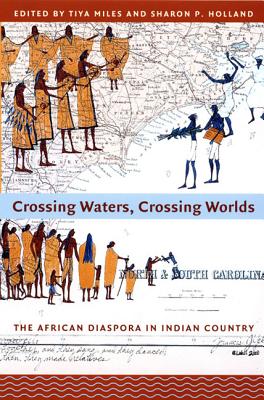 Crossing Waters, Crossing Worlds: The African Diaspora in Indian Country
Crossing Waters, Crossing Worlds: The African Diaspora in Indian Country
by Tiya Miles and Sharon Patricia HollandDuke University Press Books (Oct 19, 2006)
Read Detailed Book Description
Crossing Waters, Crossing Worlds explores the critically neglected intersection of Native and African American cultures. This interdisciplinary collection combines historical studies of the complex relations between blacks and Indians in Native communities with considerations and examples of various forms of cultural expression that have emerged from their intertwined histories. The contributors include scholars of African American and Native American studies, English, history, anthropology, law, and performance studies, as well as fiction writers, poets, and a visual artist.Essays range from a close reading of the 1838 memoirs of a black and Native freewoman to an analysis of how Afro-Native intermarriage has impacted the identities and federal government classifications of certain New England Indian tribes. One contributor explores the aftermath of black slavery in the Choctaw and Chickasaw nations, highlighting issues of culture and citizenship. Another scrutinizes the controversy that followed the 1998 selection of a Miss Navajo Nation who had an African American father. A historian examines the status of Afro-Indians in colonial Mexico, and an ethnographer reflects on oral histories gathered from Afro-Choctaws. Crossing Waters, Crossing Worlds includes evocative readings of several of Toni Morrison’s novels, interpretations of plays by African American and First Nations playwrights, an original short story by Roberta J. Hill, and an interview with the Creek poet and musician Joy Harjo. The Native American scholar Robert Warrior develops a theoretical model for comparative work through an analysis of black and Native intellectual production. In his afterword, he reflects on the importance of the critical project advanced by this volume.Contributors. Jennifer D. Brody, Tamara Buffalo, David A. Y. O. Chang, Robert Keith Collins, Roberta J. Hill, Sharon P. Holland, ku’ualoha ho’omnawanui, Deborah E. Kanter, Virginia Kennedy, Barbara Krauthamer, Tiffany M. McKinney, Melinda Micco, Tiya Miles, Celia E. Naylor, Eugene B. Redmond, Wendy S. Walters, Robert Warrior
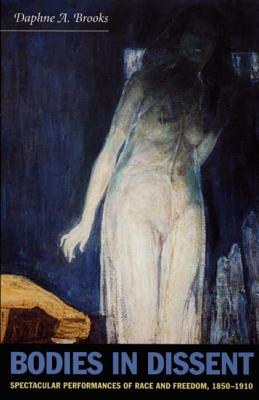 Bodies in Dissent: Spectacular Performances of Race and Freedom, 1850-1910
Bodies in Dissent: Spectacular Performances of Race and Freedom, 1850-1910
by Daphne A. BrooksDuke University Press Books (Jul 18, 2006)
Read Detailed Book Description
In Bodies in Dissent Daphne A. Brooks argues that from the mid-nineteenth century to the early twentieth, black transatlantic activists, actors, singers, and other entertainers frequently transformed the alienating conditions of social and political marginalization into modes of self-actualization through performance. Brooks considers the work of African American, Anglo, and racially ambiguous performers in a range of popular entertainment, including racial melodrama, spectacular theatre, moving panorama exhibitions, Pan-Africanist musicals, Victorian magic shows, religious and secular song, spiritualism, and dance. She describes how these entertainers experimented with different ways of presenting their bodies in public-through dress, movement, and theatrical technologies-to defamiliarize the spectacle of "blackness" in the transatlantic imaginary.
Brooks pieces together reviews, letters, playbills, fiction, and biography in order to reconstruct not only the contexts of African American performance but also the reception of the stagings of "bodily insurgency" which she examines. Throughout the book, she juxtaposes unlikely texts and entertainers in order to illuminate the complicated transatlantic cultural landscape in which black performers intervened. She places Adah Isaacs Menken, a star of spectacular theatre, next to Sojourner Truth, showing how both used similar strategies of physical gesture to complicate one-dimensional notions of race and gender.
She also considers Henry Box Brown’s public re-enactments of his escape from slavery, the Pan-Africanist discourse of Bert Williams’s and George Walker’s musical In Dahomey (1902-04), and the relationship between gender politics, performance, and New Negro activism in the fiction of the novelist and playwright Pauline Hopkins and the postbellum stage work of the cakewalk dancer and choreographer Aida Overton Walker. Highlighting the integral connections between performance and the construction of racial identities, Brooks provides a nuanced understanding of the vitality, complexity, and influence of black performance in the United States and throughout the black Atlantic.
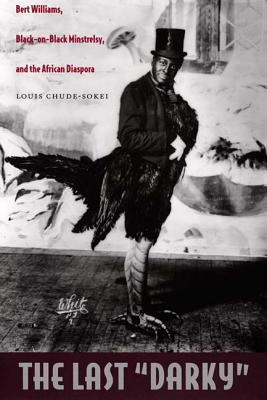 The Last ’Darky’: Bert Williams, Black-on-Black Minstrelsy, and the African Diaspora (a John Hope Franklin Center Book)
The Last ’Darky’: Bert Williams, Black-on-Black Minstrelsy, and the African Diaspora (a John Hope Franklin Center Book)
by Louis Chude-SokeiDuke University Press Books (Jan 16, 2006)
Read Detailed Book Description
The Last “Darky” establishes Bert Williams, the comedian of the late nineteenth century and early twentieth, as central to the development of a global black modernism centered in Harlem’s Renaissance. Before integrating Broadway in 1910 via a controversial stint with the Ziegfeld Follies, Williams was already an international icon. Yet his name has faded into near obscurity, his extraordinary accomplishments forgotten largely because he performed in blackface. Louis Chude-Sokei contends that Williams’s blackface was not a display of internalized racism nor a submission to the expectations of the moment. It was an appropriation and exploration of the contradictory and potentially liberating power of racial stereotypes.Chude-Sokei makes the crucial argument that Williams’s minstrelsy negotiated the place of black immigrants in the cultural hotbed of New York City and was replicated throughout the African diaspora, from the Caribbean to Africa itself. Williams was born in the Bahamas. When performing the “darky,” he was actually masquerading as an African American. This black-on-black minstrelsy thus challenged emergent racial constructions equating “black” with African American and marginalizing the many diasporic blacks in New York. It also dramatized the practice of passing for African American common among non-American blacks in an African American–dominated Harlem. Exploring the thought of figures such as Booker T. Washington, W. E. B. Du Bois, Marcus Garvey, and Claude McKay, Chude-Sokei situates black-on-black minstrelsy at the center of burgeoning modernist discourses of assimilation, separatism, race militancy, carnival, and internationalism. While these discourses were engaged with the question of representing the “Negro” in the context of white racism, through black-on-black minstrelsy they were also deployed against the growing international influence of African American culture and politics in the twentieth century.
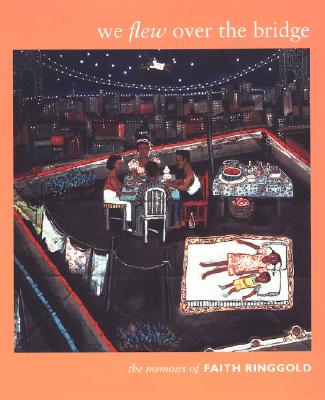 We Flew Over The Bridge: The Memoirs Of Faith Ringgold
We Flew Over The Bridge: The Memoirs Of Faith Ringgold
by Faith RinggoldDuke University Press Books (Mar 11, 2005)
Read Detailed Book Description
In We Flew over the Bridge, one of the country’s preeminent African American artists—and award-winning children’s book authors—shares the fascinating story of her life. Faith Ringgold’s artworks—startling “story quilts,” politically charged paintings, and more—hang in the Studio Museum in Harlem, the Metropolitan Museum of Art, the Guggenheim Museum, the Museum of Modern Art, and other major museums around the world, as well as in the private collections of Maya Angelou, Bill Cosby, and Oprah Winfrey. Her children’s books, including the Caldecott Honor Book Tar Beach, have sold hundreds of thousands of copies. But Ringgold’s path to success has not been easy. In this gorgeously illustrated memoir, she looks back and shares the story of her struggles, growth, and triumphs. Ringgold recollects how she had to surmount a wall of prejudices as she worked to refine her artistic vision and raise a family. At the same time, the story she tells is one of warm family memories and sustaining friendships, community involvement, and hope for the future.
 Dark Designs and Visual Culture
Dark Designs and Visual Culture
by Michele WallaceDuke University Press Books (Dec 06, 2004)
Read Detailed Book Description
Michele Wallace burst into public consciousness with the 1979 publication of Black Macho and the Myth of the Superwoman, a pioneering critique of the misogyny of the Black Power movement and the effects of racism and sexism on black women. Since then, Wallace has produced an extraordinary body of journalism and criticism engaging with popular culture and gender and racial politics. This collection brings together more than fifty of the articles she has written over the past fifteen years. Included alongside many of her best-known pieces are previously unpublished essays as well as interviews conducted with Wallace about her work. Dark Designs and Visual Culture charts the development of a singular, pathbreaking black feminist consciousness.Beginning with a new introduction in which Wallace reflects on her life and career, this volume includes other autobiographical essays; articles focused on popular culture, the arts, and literary theory; and explorations of issues in black visual culture. Wallace discusses growing up in Harlem; how she dealt with the media attention and criticism she received for Black Macho and the Myth of the Superwoman, which was published when she was just twenty-seven years old; and her relationship with her family, especially her mother, the well-known artist Faith Ringgold. The many articles devoted to black visual culture range from the historical tragedy of the Hottentot Venus, an African woman displayed as a curiosity in nineteenth-century Europe, to films that sexualize the black body—such as Watermelon Woman, Gone with the Wind, and Paris Is Burning. Whether writing about the Anita Hill–Clarence Thomas hearings, rap music, the Million Man March, Toshi Reagon, multiculturalism, Marlon Riggs, or a nativity play in Bedford Stuyvesant, Wallace is a bold, incisive critic. Dark Designs and Visual Culture brings the scope of her career and thought into sharp focus.
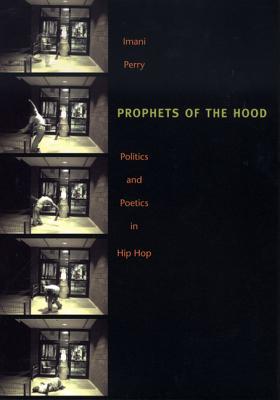 Prophets of the Hood-PB
Prophets of the Hood-PB
by Imani PerryDuke University Press Books (Nov 30, 2004)
Read Detailed Book Description
Perry examines the art, politics, and culture of hip hop, offering readings of the song lyrics of many hip hop artists, including Ice Cube, Public Enemy, De La Soul, KRS-One, Outkast, Sean "Puffy" Combs, Tupac Shakur, Lil’ Kim, Biggie Smalls, Nas, Method Man, Lauryn Hill, and Foxy Brown.
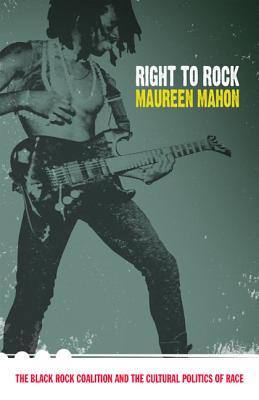 Right to Rock: The Black Rock Coalition and the Cultural Politics of Race
Right to Rock: The Black Rock Coalition and the Cultural Politics of Race
by Maureen MahonDuke University Press Books (Jun 23, 2004)
Read Detailed Book Description
The original architects of rock ’n’ roll were black musicians including Little Richard, Etta James, and Chuck Berry. Jimi Hendrix electrified rock with his explosive guitar in the late 1960s. Yet by the 1980s, rock music produced by African Americans no longer seemed to be "authentically black." Particularly within the music industry, the prevailing view was that no one—not black audiences, not white audiences, and not black musicians—had an interest in black rock.
In 1985 New York-based black musicians and writers formed the Black Rock Coalition (brc) to challenge that notion and create outlets for black rock music. A second branch of the coalition started in Los Angeles in 1989. Under the auspices of the brc, musicians organized performances and produced recordings and radio and television shows featuring black rock.
The first book to focus on the brc,
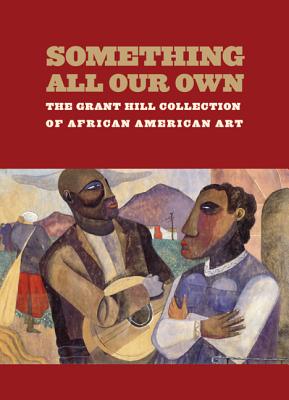 Something All Our Own: The Grant Hill Collection of African American Art
Something All Our Own: The Grant Hill Collection of African American Art
by Grant HillDuke University Press Books (Dec 01, 2003)
Read Detailed Book Description
Since 1990, Grant Hill has thrilled sports fans with his artistry on the basketball court, first as an All-American player at Duke University and then as a six-time NBA All-Star for the Detroit Pistons and the Orlando Magic. During these years, Hill has amassed a collection of art by African Americans that he now shares with the public through this book, which accompanies a traveling exhibition.
The forty-six pieces documented here include thirteen works that span the career of the great Romare Bearden, from his 1941 gouache painting Serenade to the important collages of the 1980s. Hill’s fascination with artists’ depiction of women is represented in Elizabeth Catlett’s lithographs, many of them from the 1992 series “For My People,” and her sculptures in stone, bronze, and onyx. In addition to these two giants of twentieth-century art, the Hill Collection features pieces by Phoebe Beasley, Arthello Beck Jr., John Biggers, Malcolm Brown, John Coleman, Edward Jackson, and Hughie Lee Smith.
Hill began collecting art in the early 1990s after learning from his parents to appreciate artworks not only as objects of beauty but as expressions of heritage and culture. According to the internationally known curator Alvia J. Wardlaw, he is part of an emerging group of young African American collectors who have “raised the bar for others.” Hill writes, “Getting to know yourself means understanding your background and appreciating those who have come before you. My father has a saying he uses in speeches: ‘To be ignorant of your past is to remain a boy. ‘The interest in my heritage as an African American is reflected in this collection.”
Something All Our Own features Wardlaw’s essay on the history of African American collecting. It also features articles about Bearden and Catlett by the scholars Elizabeth Alexander and Beverly Guy-Sheftall and reflections about Hill by the historian John Hope Franklin, Duke’s basketball coach Mike Krzyzewski, and the sportswriter William C. Rhoden. Hill and his father, the NFL great Calvin Hill, contribute a dialogue that explores their motivations for collecting art.
At the heart of the book are the exquisite color photographs of the forty-six artworks included in the exhibition, with commentary by Wardlaw and by Hill himself.
As a star athlete, Grant Hill is well aware that African Americans who excel in sports and entertainment are more broadly recognized than their counterparts in artistic fields. He strives to inspire young people to explore their heritage and broaden their concept of excellence by learning more about African American art. By sharing his artworks with collectors and fans, Hill reminds us that while the jump shot is ephemeral, art is enduring.
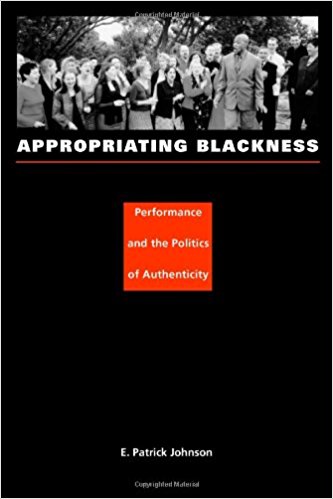 Appropriating Blackness: Performance and the Politics of Authenticity
Appropriating Blackness: Performance and the Politics of Authenticity
by E. Patrick JohnsonDuke University Press Books (Aug 13, 2003)
Read Detailed Book Description
Performance artist and scholar E. Patrick Johnson’s provocative study examines how blackness is appropriated and performed—toward widely divergent ends—both within and outside African American culture. Appropriating Blackness develops from the contention that blackness in the United States is necessarily a politicized identity—avowed and disavowed, attractive and repellent, fixed and malleable. Drawing on performance theory, queer studies, literary analysis, film criticism, and ethnographic fieldwork, Johnson describes how diverse constituencies persistently try to prescribe the boundaries of "authentic" blackness and how performance highlights the futility of such enterprises.Johnson looks at various sites of performed blackness, including Marlon Riggs’s influential documentary Black Is … Black Ain’t and comedic routines by Eddie Murphy, David Alan Grier, and Damon Wayans. He analyzes nationalist writings by Amiri Baraka and Eldridge Cleaver, the vernacular of black gay culture, an oral history of his grandmother’s experience as a domestic worker in the South, gospel music as performed by a white Australian choir, and pedagogy in a performance studies classroom. By exploring the divergent aims and effects of these performances—ranging from resisting racism, sexism, and homophobia to excluding sexual dissidents from the black community—Johnson deftly analyzes the multiple significations of blackness and their myriad political implications. His reflexive account considers his own complicity, as ethnographer and teacher, in authenticating narratives of blackness.
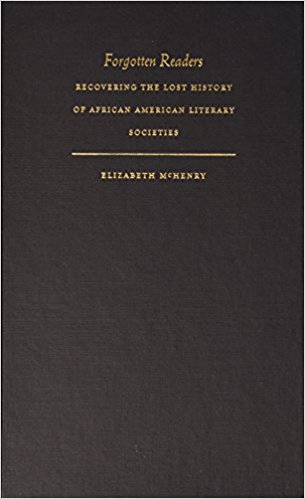 Forgotten Readers: Recovering the Lost History of African American Literary Societies (New Americanists)
Forgotten Readers: Recovering the Lost History of African American Literary Societies (New Americanists)
by Elizabeth McHenryDuke University Press Books (Oct 31, 2002)
Read Detailed Book Description
Over the past decade the popularity of black writers including E. Lynn Harris and Terry McMillan has been hailed as an indication that an active African American reading public has come into being. Yet this is not a new trend; there is a vibrant history of African American literacy, literary associations, and book clubs. Forgotten Readers reveals that neglected past, looking at the reading practices of free blacks in the antebellum north and among African Americans following the Civil War. It places the black upper and middle classes within American literary history, illustrating how they used reading and literary conversation as a means to assert their civic identities and intervene in the political and literary cultures of the United States from which they were otherwise excluded.Forgotten Readers expands our definition of literacy and urges us to think of literature as broadly as it was conceived of in the nineteenth century. Elizabeth McHenry delves into archival sources, including the records of past literary societies and the unpublished writings of their members. She examines particular literary associations, including the Saturday Nighters of Washington, D.C., whose members included Jean Toomer and Georgia Douglas Johnson. She shows how black literary societies developed, their relationship to the black press, and the ways that African American women’s clubs—which flourished during the 1890s—encouraged literary activity. In an epilogue, McHenry connects this rich tradition of African American interest in books, reading, and literary conversation to contemporary literary phenomena such as Oprah Winfrey’s book club.
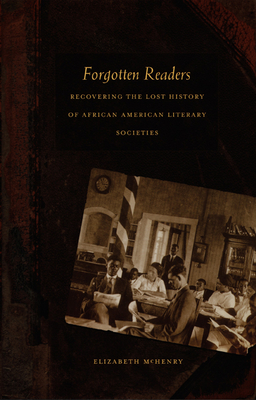 Forgotten Readers: Recovering the Lost History of African American Literary Societies
Forgotten Readers: Recovering the Lost History of African American Literary Societies
by Elizabeth McHenryDuke University Press Books (Oct 31, 2002)
Read Detailed Book Description
Over the past decade the popularity of black writers including E. Lynn Harris and Terry McMillan has been hailed as an indication that an active African American reading public has come into being. Yet this is not a new trend; there is a vibrant history of African American literacy, literary associations, and book clubs. Forgotten Readers reveals that neglected past, looking at the reading practices of free blacks in the antebellum north and among African Americans following the Civil War. It places the black upper and middle classes within American literary history, illustrating how they used reading and literary conversation as a means to assert their civic identities and intervene in the political and literary cultures of the United States from which they were otherwise excluded.
Forgotten Readers expands our definition of literacy and urges us to think of literature as broadly as it was conceived of in the nineteenth century. Elizabeth McHenry delves into archival sources, including the records of past literary societies and the unpublished writings of their members. She examines particular literary associations, including the Saturday Nighters of Washington, D.C., whose members included Jean Toomer and Georgia Douglas Johnson. She shows how black literary societies developed, their relationship to the black press, and the ways that African American women’s clubs—which flourished during the 1890s—encouraged literary activity. In an epilogue, McHenry connects this rich tradition of African American interest in books, reading, and literary conversation to contemporary literary phenomena such as Oprah Winfrey’s book club.
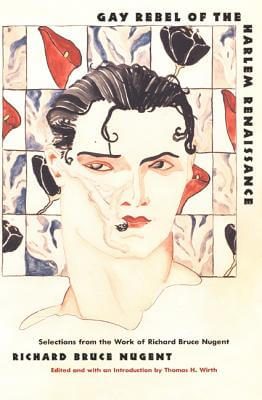 Gay Rebel of the Harlem Renaissance: Selections from the Work of Richard Bruce Nugent
Gay Rebel of the Harlem Renaissance: Selections from the Work of Richard Bruce Nugent
by Richard Bruce NugentDuke University Press Books (May 23, 2002)
Read Detailed Book Description
Richard Bruce Nugent (1906–1987) was a writer, painter, illustrator, and popular bohemian personality who lived at the center of the Harlem Renaissance. Protégé of Alain Locke, roommate of Wallace Thurman, and friend of Langston Hughes and Zora Neale Hurston, the precocious Nugent stood for many years as the only African-American writer willing to clearly pronounce his homosexuality in print. His contribution to the landmark publication FIRE!!, “Smoke, Lilies and Jade,” was unprecedented in its celebration of same-sex desire. A resident of the notorious “Niggeratti Manor,” Nugent also appeared on Broadway in Porgy (the 1927 play) and Run, Little Chillun (1933)
Thomas H. Wirth, a close friend of Nugent’s during the last years of the artist’s life, has assembled a selection of Nugent’s most important writings, paintings, and drawings—works mostly unpublished or scattered in rare and obscure publications and collected here for the first time. Wirth has written an introduction providing biographical information about Nugent’s life and situating his art in relation to the visual and literary currents which influenced him. A foreword by Henry Louis Gates Jr. emphasizes the importance of Nugent for African American history and culture.
 Passed on: African American Mourning Stories: A Memorial
Passed on: African American Mourning Stories: A Memorial
by Karla FC HollowayDuke University Press Books (Feb 01, 2002)
Read Detailed Book Description
Passed On is a portrait of death and dying in twentieth-century African America. Through poignant reflection and thorough investigation of the myths, rituals, economics, and politics of African American mourning and burial practices, Karla FC Holloway finds that ways of dying are just as much a part of black identity as ways of living. Gracefully interweaving interviews, archival research, and analyses of literature, film, and music, Holloway shows how the vulnerability of African Americans to untimely death is inextricably linked to how black culture represents itself and is represented.
With a focus on the “death-care” industry—black funeral homes and morticians, the history of the profession and its practices—Holloway examines all facets of the burial business, from physicians, hospital chaplains, and hospice administrators, to embalming- chemical salesmen, casket makers, and funeral directors, to grieving relatives. She uses narrative, photographs, and images to summon a painful history of lynchings, white rage and riot, medical malpractice and neglect, executions, and neighborhood violence. Specialized caskets sold to African Americans, formal burial photos of infants, and deathbed stories, unveil a glimpse of the graveyards and burial sites of African America, along with burial rituals and funeral ceremonies.
Revealing both unexpected humor and anticipated tragedy, Holloway tells a story of the experiences of black folk in the funeral profession and its clientele. She also reluctantly shares the story of her son and the way his death moved her research from page to person.
In the conclusion, which follows a sermon delivered by Maurice O. Wallace at the funeral for the author’s son, Bem, Holloway strives to commemorate—through observation, ceremony, and the calling of others to remembrance and celebration.
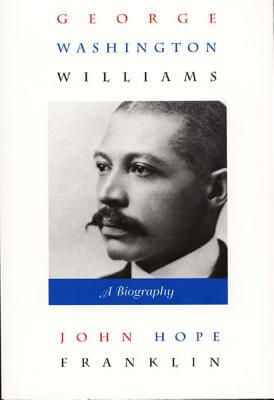 George Washington Williams: A Biography
George Washington Williams: A Biography
by John Hope FranklinDuke University Press Books (May 01, 1983)
Read Detailed Book Description
In George Washington Williams, John Hope Franklin reconstructs the life of the controversial, self-made black intellectual who wrote the first history of African Americans in the United States. Awarded the Clarence L. Holte Literary Prize, this book traces Franklin’s forty-year quest for Williams’s story, a story largely lost to history until this volume was first published in 1985. The result, part biography and part social history, is a unique consideration of a pioneering historian by his most distinguished successor.
Williams, who lived from 1849 to 1891, had a remarkable career as soldier, minister, journalist, lawyer, politician, freelance diplomat, and African traveler, as well as a historian. While Franklin reveals the accomplishments of this neglected figure and emphasizes the racism that curtailed Williams’s many talents, he also highlights the personal weaknesses that damaged Williams’s relationships and career. Williams led the way in presenting African American history accurately through the use of oral history and archival research, sought to legitimize it as a field of historical study, and spoke out in support of an American Negro Historical Society and as a critic of European imperialism in Africa. He also became erratic and faithless to his family and creditors and died at the age of forty-one, destitute and alienated from family and friends. George Washington Williams is nothing less than a classic biography of a brilliant though flawed individual whose History of the Negro Race in America remains a landmark in African American history and American intellectual history.
